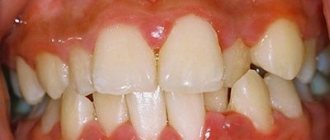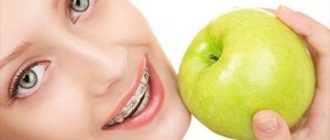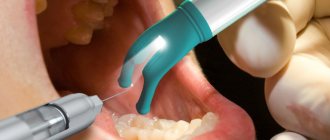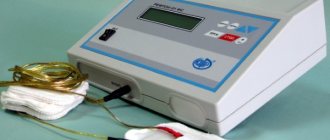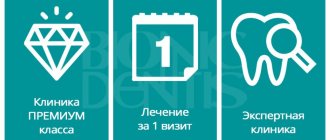If you are reading this article, it means that you are interested in improving your bite and are considering braces.
This shows that you have the determination to achieve a healthy, charming smile.
Here we have collected the questions that people most often write to us in messages.
I hope this changes your life for the better, just like it has changed the lives of thousands of other people.
Can adults get braces to correct their bite?
Anyone can correct a malocclusion, regardless of age. But in an adult, this process takes longer than in children, because skeletal growth has already stopped and hard bones are more difficult to form.
In addition, some oral health conditions may delay the installation of braces. For example, caries, periodontal disease, endocrine diseases.
Sometimes the effect of treatment is influenced by the presence of crowns and bridges. The treatment period starts from 1.5 years.
The third stage is eliminating current dental problems
Treatment with braces is a long process, during which it is difficult to carry out treatment due to the presence of a fixed structure in the patient’s mouth. Before installation, the dental system is sanitized. It is necessary to cure existing caries, pulpitis, periodontitis and other possible diseases. Sometimes it is necessary to treat even those teeth whose condition is satisfactory at the moment.
In some cases, removal of certain dental units is required. The decision about extraction is made by the orthodontist. This is a last resort method. The doctor tries to preserve and minimally injure the patient’s natural teeth. Sometimes patients have their teeth removed in advance and come for bite correction. Doctors strongly do not recommend doing this, otherwise treatment may be complicated by a rash act.
If sanitation of the oral cavity is performed in advance, it is enough to present a certificate to the orthodontist. Before fixing the bracket system, professional oral hygiene is carried out: tartar, soft and hard deposits are removed, teeth are ground and polished. Subsequent self-care with braces will differ from caring for natural teeth. The orthodontist will tell you in detail what means and how to care for the oral cavity with braces.
Does teeth straightening hurt?
The installation of braces itself is painless, but requires patience because it takes about an hour.
For 7-10 days, teeth may hurt when biting. The body must get used to foreign objects. In general, you live your old life, you just notice pleasant changes in yourself.
Control visits are needed to correct the process and form the correct position of the teeth. Usually after changing the arch the pain goes away within 3-7 days. It all depends on individual sensitivity.
For some, wearing braces is only unpleasant, for others, on the contrary, it is painful, and some do not feel anything.
How long does it take to install?
The structures are installed only on healthy teeth. Therefore, before starting orthodontic treatment, you need to undergo dental treatment. This will help reduce the risk of developing gum and dental disease while wearing it. Caries that appeared during treatment may cause dismantling of the structure. This means that treatment will have to start again. The duration of the procedure depends on the degree of the anomaly, the doctor’s experience, and the characteristics of the dental system. The time does not depend on whether braces are placed on adults or children. Non-ligature structures are easier to install. Therefore they are installed faster.
Installation steps:
- therapeutic treatment;
- professional cleaning;
- The orthodontist processes and dries the enamel;
- Glue is applied separately to each tooth and a lock is fixed to it;
- fixing the arch with clasps or ligatures;
- design correction.
Once the system is installed, it starts working immediately. That is, the teeth begin to gradually shift. The first result can be seen after 3-4 weeks. After the initial displacement, the arc pressure weakens. Therefore, you need to regularly visit the orthodontist for regular arch correction. The doctor monitors the creation of constant pressure. This is the key to effective correction of the bite and dentition. You can ask the orthodontists at our clinic at your appointment for how long braces are worn. You can sign up through the website or by phone.
Do braces make it difficult to eat?
Once installed, you will need to learn how to eat in them. This period takes on average 3-7 days.
At this time, give preference to soft and liquid foods. Cut fruits and vegetables into small pieces. Avoid fibrous and sticky foods.
Over time, you will be able to eat almost everything except Coca-Cola (can dissolve glue), hard foods (nuts, crackers, chocolate) and sticky sweets (chocolate, cookies or caramel bars). You should also not chew gum.
Nutrition while wearing braces
Until you have adjusted to braces, you need soft or liquid foods. Introduce new foods into your diet gradually. During the adjustment period, exclude the following foods.
- Solid products
. First you need to grind them in a blender. Lollipops, crackers and nuts should also be removed from the diet for a while. - Food that is too cold or hot
. During the period of adaptation, the sensitivity of teeth and gums increases and discomfort and pain may appear.
The menu should consist of foods that do not need to be thoroughly chewed:
- fermented milk drinks (kefir, yogurt, fermented baked milk);
- boiled cereals (semolina, buckwheat, wheat, oatmeal);
- meat in the form of pate;
- puree soups;
- jelly and curd mass:
- bananas, watermelons, apricots, plums and persimmons.
After adaptation, the list of foods on the menu will expand, but dentists still recommend excluding the following from the diet.
- Everything sticky
- nougat, chewing gum, toffee, caramel and anything that stretches. These products get stuck in the design parts and become food for bacteria. - Starch
- baked goods, cereals and corn sticks - also, when stuck in braces, causes the growth of harmful microorganisms. - Coloring drinks and food
- black tea, colored soda, coffee, beets, wine. This is especially important if ceramic or sapphire structures are installed - they are easier to paint than others.
How often should inspections be carried out?
Every 1-2 months, it all depends on the defect and the individual structure of the patient’s teeth. During the visit, the orthodontist checks the success of the treatment and sets a vector for the arch, which determines the movement of teeth in the right direction.
Missing follow-up visits may negate the effect of previous treatment. You are also required to visit a hygienist every six months.
Braces, whether external or internal, need to be worn for an average of 1.5 years. But determining more precise timing depends on the initial situation and age of the patient. Sometimes it takes 2 years to eliminate a defect.
Minimum and maximum wearing periods
The time required to correct defects of varying severity also differs. Simple anomalies include diastema, trema, and crowding of teeth, which is caused by impaired development of the jaw. In such cases and if there is a gap due to missing teeth, the treatment period is 12 months. Two years or more - this is how long it takes to correct a distal bite, cross-row arrangement, open bite, or complex crowding.
There are cases when orthodontic treatment lasts more than 3 years. As a rule, such patients also require surgical treatment. Sometimes teeth need to be removed before braces can be installed. Indications for removal: abnormal jaw development, presence of supernumerary teeth. Extraction will free up space for movement. With the development of inflammatory processes in the mouth, allergies to components of the system and improper hygiene, the system may be removed ahead of schedule. After treatment and elimination of contraindications, braces are placed again.
What to do if the bracket comes off?
In itself, this happens quite rarely, only in cases of severe crowding of teeth, since the arch puts a lot of pressure on the dentition and the lock falls off. Another option is if the patient is a nut or other solid food lover.
If you find a broken bracket, contact your orthodontist immediately. Otherwise, the teeth will begin to gradually move to their original position. Also remove elastic bands if you wear them.
The doctor sees patients with unstuck braces out of turn. It takes about 5 minutes to glue a new lock.
It also happens that the archwire flies out of the bracket grooves. You can try to get it back yourself. However, this should be done extremely carefully, without damaging the adjacent locks.
Fifth stage - activation process
After fixing the bracket system, activation occurs. The procedure is carried out according to the prescribed treatment plan. It is necessary to visit the doctor regularly at scheduled times. At a scheduled appointment, the orthodontist assesses the condition of the structure, tightens the arch, and replaces clasps and ligatures that have failed.
Initial activation will not straighten the dentition. The teeth move slowly, so the equipment needs to be adjusted each time. The activation process does not take much time. It is important not to violate the recommended deadlines.
Installing braces is a safe and painless procedure. The patient may experience discomfort from sitting in the dentist's chair for long periods of time. To prevent dry lips, use a moisturizer. During the process, pressure may be felt on the teeth, but not pain. In general, the procedure is comfortable and has virtually no resemblance to dental treatment.
How to brush your teeth with braces?
This is where a traditional toothbrush and toothpaste don't serve their purpose. Therefore, you will need to buy a special orthodontic brush, brushes and floss from the pharmacy. You can also use an oral irrigator if you wish.
This way you can effectively clean your teeth and the area around the locks. Teeth should be thoroughly brushed after each meal, because food debris is deposited on braces, which contributes to the development of caries and does not look aesthetically pleasing. We have repeatedly encountered patients whose teeth are more well-groomed than those of a person without braces.
When is it necessary to install braces?
A bracket system is an orthodontic device consisting of a bracket plate with a recess for an arch. The main tasks of the orthodontist are to make the physiological closure of the jaws, return the units to anatomical positions, and give the smile a natural and beautiful appearance.
Standard system includes:
- Bracket. A plate fixed to the coronal part of the unit with specialized material.
- Wings or castle. A recess is formed for the passage of the orthodontic arch.
- Arc. A horseshoe-shaped wire made of an alloy of various metals, along which the teeth are directed.
- Ligatures. Rubber bands or wire connecting the braces and the arch.
The purpose of this treatment is to straighten teeth and correct jaw abnormalities. An improvement in the bite can be noted after 6-8 months.
Indications for therapy with braces:
- malocclusion;
- violation of the symmetry of facial features;
- large gaps between units;
- lack of space in the dentition;
- injuries of the maxillofacial area or TMJ disease (pain, crunching when chewing or closing the jaws);
Restrictions on the use of equipment:
- many non-removable orthopedic structures;
- in women, pregnancy and breastfeeding;
- blood diseases;
- lung pathologies;
- immunodeficiency states;
- inflammatory diseases of the extremities (rickets, arthrosis, arthritis);
- cancer.
Which braces are best for different age categories? Teenagers and adults are fixed with equipment of different models. It is important to choose systems with the attending physician, taking into account age, the anomaly itself, etc.
Are braces the last stage of orthodontic treatment?
After removing braces, you need to consolidate the effect of straightening your teeth. For this purpose, retainers are made that will protect teeth from returning to their original place.
There are two types of retainers:
- Removable – transparent, plastic mouth guards. Used only at night or during a certain period.
- Non-removable - made of metal. They are installed on the back surface of the teeth using special composite materials.
The decision on the best method is made by the orthodontist. The aligners must be worn at all times during the first month, removed only for eating and brushing your teeth. On average they are worn for 2 years.
While wearing retention devices, you must visit a doctor every 3-6 months.
Types of bracket systems
Installation principle systems are defined as:
- vestibular - the classic form of the device, attached to the outer part, visible,
- lingual - fastening on the internal (lingual) part, not accessible to view from the outside.
The designs are: ligature - the use of elastic bands, replaced with elastic ones as the bite is straightened, and modern non-ligature instruments.
Note! Lingual differs from vestibular not only in the high cost of maintenance, but also not in ease of wearing: a foreign body installed on the inside often wants to be explored with the tongue, which causes injury and affects diction. In addition, an “invisible” device is more difficult to care for.
When choosing a lingual system, you can install braces only from all-metal material; for vestibular installation, there is a wide selection of types of brackets.
Metal braces are standard steel components and a steel ligature, which in the new design have been reduced in size, reducing the inconvenience caused to the user.
Advantages:
- ease of use,
- comfortable care when wearing,
- low price,
- efficiency,
- In the case of ligatures, children and adolescents can choose the color of the rubber bands to determine their individuality.
Flaws:
- noticeable.
Plastic
Plastic braces are designed to correct minor irregularities, as they do not have sufficient strength and cannot affect severe irregularities and curvatures.
Advantages:
- unusual design,
- They are made transparent, making them practically invisible.
Flaws:
- turn yellow and wear out,
- do not have a strong impact, increasing the time period.
Ceramic system
Ceramic braces - made of ceramics matched to the enamel tone to reduce visibility.
Advantages:
- aesthetics,
- By choosing a ceramic tone that is a shade lighter than natural enamel, you get a whitening effect.
Flaws:
- are more expensive
- more time is spent on care.
Sapphire braces
The sapphire braces system is characterized by being made from artificially grown sapphires, which, due to the refraction of light, become transparent on a dazzling smile.
Advantages: not visible to outsiders.
Flaws:
- impressive price,
- exclusion of any products that can damage the components (nuts, snacks, hard vegetables and fruits).
Titanium
Titanium braces are a metal type, the main material of which the device is made is titanium.
Advantages:
- hypoallergenic,
- strong and durable, suitable for changing “neglected” cases.
Disadvantages: noticeable to prying eyes.
The dentist may suggest installing a combined design of braces: ceramics on the front ones, and a classic prefabricated metal bracket system on the “invisible” rear ones.
How does this happen?
You need to start working on correcting the curvature with an individual consultation with a specialist. During the appointment, the doctor assesses the condition of the oral cavity through examination, x-rays, taking impressions, and selects the best braces to correct the situation.
The most informative is a 3D image of the cavity, offered by most modern reputable clinics. This diagnostic method will be more expensive, but it is the most accurate for determining the scope of work.
Next comes oral debridement:
- detection of caries disease,
- treatment of caries in fact,
- thorough hygienic cleaning,
- in the absence of support for fixation, the issue of future implantation is decided.
Installation of braces (one row per visit) lasts about 2 hours, depending on the complexity of the case: the specialist prepares the surface, installs the bracket and attaches the arch to them. The procedure is absolutely painless.
Correction is necessary every 1-1.5 months until the problem is completely eliminated:
- metal - 1-2 years,
- ceramic and sapphire - up to two years,
- lingual - 1-2 years.
Removing braces involves opening the “locks” of the system, removing the thick fishing line and removing the “squares” with special tweezers. Next, the doctor will install a retainer (steel wire) on the inner surface of the teeth, or offer a transparent plastic tray to secure the achieved result. The retention device will remain with the patient for at least a year. After removal, the doctor polishes the enamel and coats it with fluoride (varnish or paste).
What is the price
The answer to the question of how much braces cost can only be given by determining the factors that influence the cost:
- The degree of complexity of the initial problems, the number of crooked teeth,
- the straightening method chosen by the patient (metal is cheaper than sapphire and ceramics, internal is more expensive than external),
- material of components,
- availability and preparedness (a template version may be suitable for the user, or custom-made may be necessary),
- brand (domestic or foreign)
- the need for preparatory work (getting rid of carious stains, pulpitis, placing a temporary crown).
Don’t forget about a monthly visit to the orthodontist for arch correction and oral hygiene. The final cost is the sum of the drawn up treatment plan and is necessarily specified in the contract or agreement, as well as the method of payment (immediately or in installments).
On average, taking into account all factors, the average price for titanium devices is from 80 to 150 thousand rubles per jaw, sapphire ones will cost from 100 to 250. Lingual brace - up to 300 thousand rubles.
The choice of suitable structures depends on the knowledge and skills of the orthodontist, patient reviews, and before and after photos.
You should not skimp on your bite when the bones of the jaw and skull are involved, affecting the overall health of a person. Choose professional dentistry carefully and do not chase promotions and unprecedented prices.
Can you continue to live with crooked teeth?
Crooked teeth are more vulnerable to tooth decay and periodontal disease. If teeth grow incorrectly, their surfaces become excessively worn down when eating, which worsens the malocclusion. Therefore, sometimes it leads to serious diseases of the temporomandibular joints.
In addition, if you suffer from frequent headaches, chondrosis, or have tinnitus, it is better to check your bite.
Which braces are more profitable to install?
Self-ligating and ligature braces correct the bite and correct complex dental anomalies. Non-ligating systems are more expensive, but the installation of self-ligating structures reduces the number of visits to the clinic. At a lower price for edgewise braces, the patient visits the orthodontist an average of 24 times during treatment, 2.5 – 3 years. When installing self-ligating systems, approximately 12 visits to the doctor are required. The course lasts from 1 to 2.5 years.
Clinic management is often not ready to purchase expensive systems and pay for additional training for orthodontists. Doctor A.V. Tikhonov economically substantiated the advantages of installing ligature-free braces. The orthodontist compared the rate of arch replacement during activation of self-ligating structures and traditional models with ligatures. On average, removing and installing the arch takes 8 minutes. 14 sec. on classic systems and 1 min. 21 sec. – on self-ligating ones. Usually the arches are changed on the upper and lower jaws - the duration of the manipulation is doubled.
treatment on Damon Q2
According to the researcher, taking into account the reduction in treatment time and the number of visits to the doctor, ligature-free braces are more economical for the clinic and the patient. The ergonomics of working with the ecosystem of Damon braces and additional elements reduces the appointment time and the total financial costs of the person visiting the clinic.
Braces hurt the oral cavity, what should I do?
After installing braces, each patient receives wax for locks from the orthodontist. At the very beginning, it is worth applying it to the entire system, because the mucous membrane in the oral cavity is not yet accustomed to contact with foreign objects.
Abrasions and wounds heal very quickly. Their healing can be accelerated by using agents that promote the healing of wounds in the oral cavity.
Who should not get braces?
Installation of braces has contraindications:
- Absolute – it is not possible to eliminate them: complete absence of teeth (edentia) or the absence of a large number of them;
- changes in the bone tissue of the jaw, leading to its fragility - osteoporosis and osteochondropathy;
- severe diseases of the blood, cardiovascular, endocrine (diabetes mellitus) systems;
- oncological diseases;
- tuberculosis, AIDS;
- mental illness.
- infectious-inflammatory and degenerative-dystrophic diseases of periodontal tissues (periodontitis, periodontal disease);
After treatment of these diseases, braces can be installed.
How to get a tax deduction for treatment with braces
For three years, Russian tax residents can claim a tax deduction for treatment with braces. Taxpayers receive a refund from the state in the amount of 13% of the amount spent on their own treatment, treatment of minor children, parents or spouses. Only the personal income tax that the taxpayer paid to the state for the last year is returned.
Package of documents for the tax office:
- declaration 3-NDFL;
- certificate from place of work 2-NDFL;
- documents from the clinic - a copy of the treatment agreement, a copy of the clinic’s license, a certificate of payment for treatment, cash receipts.
A person who has undergone orthodontic treatment and is claiming a refund must file a tax return by the end of April.
The state returns 13% of the maximum 120,000 - 15,600 rubles. The material is for informational purposes only and is presented for informational purposes. It does not replace consultation with an orthodontist and is not a guide to correcting dental anomalies.
Braces care
Both during the adjustment period and after, it is very important to properly care for your braces. Not only the comfort of their use, but also the final result of treatment depends on this. Be sure to brush your teeth several times a day, especially after each meal. In this case, a classic toothbrush will be ineffective; it is necessary to purchase special devices for treating braces.
Orthodontic brushes have a special groove in the bristles in the shape of a tick. Short hairs clean the staples, and long hairs clean the enamel surface around them. A mono-tuft brush can also be useful; it makes cleaning hard-to-reach areas much easier. Brush cleaners can also help with this; they come in different sizes and hardness. They perfectly clean small particles of food from under small structural parts, preventing the accumulation of dangerous bacteria.
The most effective tool for cleaning the mouth while wearing braces is an irrigator. Thanks to the strong pressure of the liquid, contaminants easily fall behind the enamel and elements of the braces system. With its help, you can even process areas invisible to the eye, the inside of the row and the metal arc from all sides. You can take dental floss with you on the road, but you need to use it as carefully as possible so as not to damage the structure.
#1 Braces provoke the development of caries
This statement is false. Tooth decay can occur not because of braces, but because of bacteria. They can multiply in pieces of food that are stuck in the teeth. On the one hand, the design of braces can help retain pieces of food, but it all depends on proper brushing of the teeth.
If you brush your teeth responsibly and use additional special tools, you can achieve complete removal of food. And if there are no stuck pieces, then bacteria have nowhere to multiply and caries does not threaten.
Drink more water
The more water you drink during the day, the better it is for your teeth. Braces dry out the oral mucosa, causing discomfort and problems with the enamel. Water, as well as juicy fruits and vegetables, increases salivation and helps avoid caries. Of course, you shouldn’t get carried away, because everyone has their own body characteristics. For some, 1-2 liters of water a day is enough, but for others, 5 liters will not be enough. Listen to your body, it will definitely tell you when it’s time to stop.
Why is it important to choose the right orthodontist?
Orthodontic treatment is long-term, it will last from a year or more, so the patient cannot immediately determine whether it is being treated well or not. If something in the treatment goes wrong due to the doctor’s fault, you will find out about it months, or maybe years, later. In order not to waste time, money, nerves and health, it is important to immediately choose a good orthodontist with whom you will also enjoy communicating for a long time. If you want to know our recommendations on how to do this so as not to regret it, read the article: “How and why to choose an orthodontist?”
Second month of treatment: correction of gross anomalies
The first changes become noticeable in the photo by the end of the second month. The orthodontic arch, after installation, repeated the shape of the abnormal bite, over time began to return to the originally specified state, corresponding to the correct bite. At the same time, under the force of her traction, the teeth also began to move in the right direction.
The first positive results are so impressive that some patients are ready to remove their braces at this stage. Of course, this is impossible. Orthodontic treatment initiates the natural biomechanical process of bone removal and growth, interrupting which will force the teeth to return to their original position.
#3 Can take a long time
This is true. Depending on the defects, you will have to wear braces from six months to three years. But even after the specified period, everything does not end. After removing the braces, you will need to install retainers, which will have to be worn for the same amount of time. Retainers are installed to prevent teeth from returning to their previous position.
If you decide to install braces, you will have to come to terms with the idea that it will last a long time. Think positively and be patient, because the result will be worth it.
